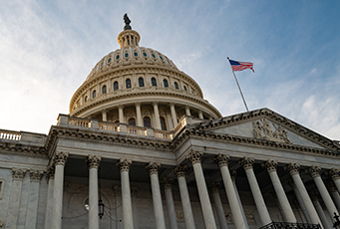On August 24, 2022, millions of Federal student loan borrowers let out a collective cheer after President Joe Biden announced his long-awaited student loan forgiveness plan. Here’s a recap of the rules and limitations:
Single borrowers with Adjusted Gross Incomes (AGI) below $125,000 in 2020 or 2021 are eligible for up to $10,000 forgiveness.
Married filing jointly borrowers with AGIs below $250,000 in 2020 or 2021 are eligible for up to $10,000 of forgiveness each, meaning a married couple could receive up to $20,000 in forgiveness. The same income threshold applies to head-of-household borrowers.
Any borrower who received a Pell Grant as part of their aid package is eligible for an additional $10,000 in forgiveness.
Details on Forgiveness
Now that the parameters have been laid out let’s discuss the forgiveness process. Details suggest that borrowers who meet the AGI requirements and are already enrolled in income-driven repayment (IRD) plans will receive automatic forgiveness. Those not on an IDR plan can apply for forgiveness beginning in October.
Forgiveness can come in one of two forms. Borrowers that made payments during the pandemic forbearance period are eligible for a dollar-for-dollar refund, up to the $10,000 limit. If no payments were made during forbearance, the borrower could expect their outstanding balance to be reduced. In addition, certain borrowers may receive a combination of forgiveness and refunded payments.
The Department of Education has specified an order in which forgiveness will be applied across borrowers with various loan types (think: FFEL, Direct, Perkins, etc.). Notably, the order in which forgiveness will be applied across a series of loans within the same loan type (such as Direct) is as follows:
- Highest interest rate
- Unsubsidized, if interest rates are the same
- Most recent, if the interest rate and subsidy status are the same
- Lowest combined principal and interest balance, all else equal
Tax Consequences
While Biden’s loan forgiveness will not be taxable at the federal level, several states, including Indiana, require all loan forgiveness to be subject to state income tax. Indiana levies a flat 3.23 percent income tax, which means Hoosiers who received loan forgiveness will owe $323 for every $10,000 forgiven. As with normal years, income tax is not due until you file your tax return.
Schedule a Consultation
We have helped our clients answer these questions and more. If you want a clear understanding of your financial future, and need help making changes to reach your goals, schedule a consultation and we can get started.
Prior to implementing any investment strategy referenced in this article, either directly or indirectly, please discuss with your investment advisor to determine its applicability. Any corresponding discussion with a Bedel Financial Consulting, Inc. associate pertaining to this article does not serve as personalized investment advice and should not be considered as such.
Recommended Articles
“Trump Accounts”: A Family’s Guide to One Big Beautiful Opportunity
Trump Accounts are part of the OBBB and designed to...
Sending Your Child Off to College? Don’t Forget These Important Documents
It’s hard to think about having our children implement...





